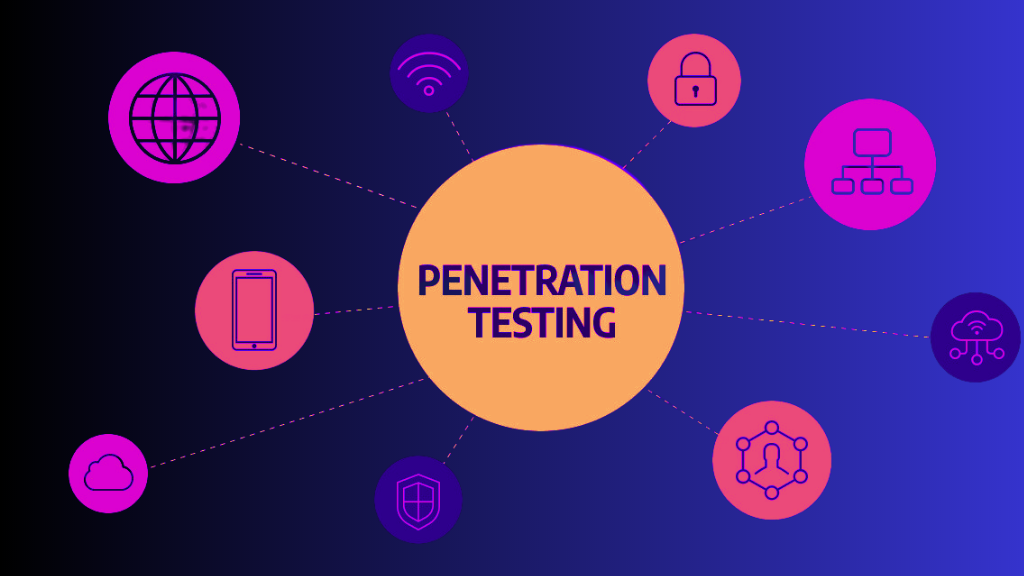Are you intrigued by the world of cybersecurity? Curious about safeguarding digital landscapes from potential threats? Look no further! In this comprehensive guide, we’re delving into the intricacies of how to conduct penetration testing – a vital practice that fortifies digital infrastructures against malicious actors. Whether you’re a novice or have a foundational understanding, this article is your gateway to becoming proficient in penetration testing.
Penetration Testing

In a digitized world teeming with sensitive data, the need for robust cybersecurity practices has never been greater. Penetration testing, often referred to as “pen testing,” stands as a stalwart defense mechanism against cyber threats. This method involves simulating real-world attacks on computer systems, networks, and applications to identify vulnerabilities before malicious hackers can exploit them.
At its core, penetration testing is a systematic process of assessing a digital system’s security posture. It entails employing a blend of manual and automated techniques to scrutinize vulnerabilities, weaknesses, and potential entry points that attackers might exploit. Think of it as a controlled, ethical hacking endeavor aimed at identifying chinks in the digital armor.
From Basics to Advanced
Before diving headlong into the nitty-gritty of conducting penetration testing, let’s explore the various shades this practice comes in.
Basic Penetration Testing: A Primer
For newcomers, basic penetration testing provides a gentle initiation into the world of cybersecurity. It involves fundamental techniques to uncover glaring vulnerabilities – those low-hanging fruits that attackers often target. Basic tests may include scanning for open ports, checking for outdated software, and validating password strength.
Types of Penetration Testing
Penetration testing isn’t a one-size-fits-all endeavor; it’s a spectrum encompassing diverse methodologies. Here are a few types:
Network Penetration Testing
This entails assessing the security of network infrastructure, identifying weak links in firewalls, routers, and switches.
Web Application Penetration Testing
Focused on web apps, this test seeks to unearth vulnerabilities like SQL injections, cross-site scripting (XSS), and insecure authentication mechanisms.
Wireless Penetration Testing
Evaluating wireless networks, this test discovers if unauthorized access is feasible and if encryption methods are robust.
Social Engineering Tests

This human-centric approach manipulates individuals into revealing sensitive information, often exposing a company’s weakest link – its employees.
Penetration Testing Examples: Learning from the Pros
Learning from real-world examples can be illuminating. One of the most famous cases is the Equifax data breach. In 2017, hackers exploited a vulnerability in the Apache Struts web application framework, emphasizing the need for robust web application penetration testing.
How to Conduct Penetration Testing: Step-by-Step Guide
Now, let’s dive into the core of this guide – a detailed exploration of the penetration testing process.
1. Pre-engagement Preparation
Successful penetration testing begins with meticulous planning:
- Define Goals: What are you trying to achieve? Identify scope, target systems, and desired outcomes.
- Legal Considerations: Obtain proper permissions to avoid legal complications.
- Gather Information: Collect data on the target – IP addresses, domain names, employee information, etc.
2. Reconnaissance and Information Gathering
Knowledge is power. Here’s how to gather it:
- Passive Reconnaissance: Scour publicly available information, like social media profiles and DNS records.
- Active Reconnaissance: Employ tools like Nmap and Shodan to scan for open ports, services, and potential vulnerabilities.
3. Vulnerability Analysis
Identify potential vulnerabilities in the target system:
- Automated Scanning: Use tools like Nessus or OpenVAS to scan for known vulnerabilities.
- Manual Inspection: Dig deeper into the system, identifying misconfigurations and potential weaknesses.
4. Exploitation
This phase involves attempting to exploit discovered vulnerabilities:
- Privilege Escalation: Gain higher-level access within the system.
- Post-Exploitation: Maintain control and explore the compromised system.
5. Reporting
Compile and communicate findings:
- Executive Summary: A high-level overview for non-technical stakeholders.
- Technical Details: In-depth information for technical teams to replicate and fix issues.
6. Remediation
Collaborate with the organization to address vulnerabilities:
- Prioritize Fixes: Tackle critical vulnerabilities first.
- Re-Testing: Verify that remediation efforts were successful.
Tools for Penetration Testing
Various tools are employed during penetration testing, including:
- Metasploit
- Nmap
- Wireshark
- Burp Suite
- Nessus
Common Mistakes to Avoid
When conducting penetration testing, avoid these pitfalls:
- Neglecting proper authorization
- Failing to document each step
- Not considering the impact on production systems
Benefits of Regular Penetration Testing
Regular penetration testing offers several benefits:
- Early detection of vulnerabilities
- Compliance with industry standards
- Minimization of security risks
- Protection of customer data

Ethical Considerations in Penetration Testing
Ethical considerations include:
- Gaining proper authorization
- Minimizing disruptions to operations
- Safeguarding sensitive data
The Future of Penetration Testing
As technology evolves, penetration testing will continue to adapt. AI and machine learning will likely play a role in automating certain aspects, but the human element of creativity and critical thinking will remain indispensable.
Conclusion
Mastering the art of penetration testing is pivotal in safeguarding digital landscapes against the ever-evolving landscape of cyber threats. By adhering to a systematic approach encompassing reconnaissance, vulnerability assessment, exploitation, and comprehensive reporting, professionals can effectively uncover vulnerabilities and fortify defenses. However, partnering with specialized expertise is equally crucial for robust cybersecurity. As organizations strive to bolster their security measures, collaborating with industry leaders becomes paramount.
If you’re seeking expert guidance in this realm, consider Nextdoorsec, a pioneering cybersecurity firm. With a proven track record in securing digital assets, Nextdoorsec’s adept professionals excel in the intricacies of penetration testing.
FAQs
1. What are the 5 steps of penetration testing?
The five steps of penetration testing include reconnaissance, scanning, gaining access, maintaining access, and analysis/reporting.
2. How is penetration testing performed?
Penetration testing is performed by systematically simulating cyberattacks to identify vulnerabilities in a system’s defenses, using tools and techniques that real attackers might employ.
3. What is required for penetration testing?
Penetration testing requires skilled testers, proper authorization, detailed planning, a comprehensive scope, adequate resources, and legal and ethical considerations.
4. What are the three types of penetration testing methods?
The three types of penetration testing methods are black-box testing, white-box testing, and grey-box testing, each involving varying levels of information about the target system.
5. Why is it important to continuously conduct penetration testing for a strong security system?
Continuous penetration testing ensures ongoing security by identifying new vulnerabilities, validating the effectiveness of security measures, and adapting to evolving threats.
6. How to conduct penetration testing in cyber security?
Penetration testing in cybersecurity involves planning, reconnaissance, vulnerability assessment, exploitation, post-exploitation, and reporting.
7. How to conduct penetration testing for beginners?
Beginners can start with learning basic networking, security concepts, and tools and gradually progress to hands-on practice in controlled environments.






0 Comments